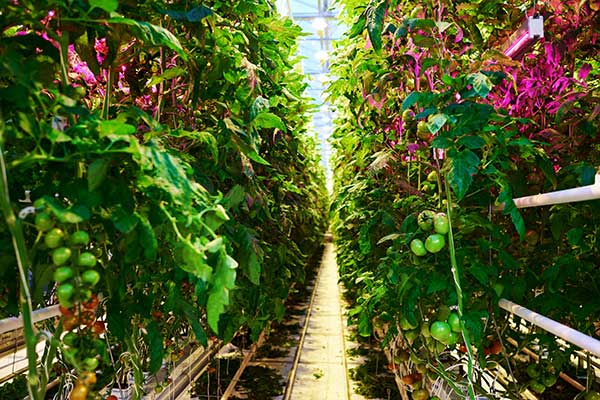
Measurement of LED Grow Lights used in Horticulture
Opportunities of the LED/SSL Technology
LED lighting offers horticulturalists many potential benefits such as increased crop yields, improved product quality, and control of particular plant characteristics as well as the normal solid-state lighting benefits of reduced energy and maintenance costs. LED lighting can supplement natural sunlight within greenhouses to extend fruit, vegetable and flower growing seasons, particularly during the shorter days of winter.
LEDs allow control of the amount and spectral composition of light which can be used to govern a plant’s growth rate, shape and flowering. LEDs can also be positioned much closer to foliage than traditional lighting technologies, such as high pressure sodium lamps, as they do not radiate heat.
Therefore, energy efficient LED grow lights are a key enabling technology for a new form of horticulture, known as vertical farms, where crops are grown in vertically stacked layers in the absence of any natural daylight typically. Vertical farms are expected to play an important role in feeding the rapidly growing population of our increasingly urbanized world.
Requirements for precise PAR Meters
The horticultural world is very active researching spectral and intensity mixes, often referred to as "lighting recipes", to optimise crop growth and yield with LED lighting. Development and use of these "lighting recipes" in modern horticulture requires spectral measurement data on the pure and mixed colours produced by LED grow lights. This requires a new generation of sensor to replace the traditional PAR sensor, a quantum device that provides no spectral information. The MSC15 is a convenient, low-cost spectral light meter, ideal for routine measurements of LED lighting within horticulture. The additional functions of the BTS256-EF lend itself to more demanding horticultural research tasks.
In 1972, K. McCree [1] demonstrated that photosynthetic response correlates with the amount of photons that reach a plant rather than the energy of the light. See Technical Article – Measurement of PAR for an in-depth explanation. Photosynthetically Active Radiation, PAR, is just a descriptive term for radiation within the 400-700nm wavelength range (CIE Publication 106) [2]. The commonly used quantitative PAR terms are:
- Photosynthetic Photon Flux (PPF): measurement of the total number of photons emitted by a light source each second within PAR wavelength range. Measured in μmol/s. Analogous to ‘lumens’ for visible light.
- Photosynthetic Photon Flux Density (PPFD): measurement of the total number of photons within PAR wavelength range that reach a surface each second measured over a one square meter area. Measured in μmol/m2/s. Analogous to ‘lux’ for visible light.
- Day Light Integral (DLI): cumulative measurement of the total number of photons within PAR wavelength range that reach a surface during 24 hour period, measured over a one square meter area. Measured in mol/m2/d.
Besides optimising photosynthetic response, LED lighting offers many possibilities to exploit the fact that plants have additional photoreceptors responsive to UV and far-red radiation that impact plant development. This has prompted the American Society of Agricultural and Biological Engineers, ANSI/ASABE S640 [3], to introduce new metrics such as:
- Ultraviolet Photon Flux Density (PFDuv), 280 nm to 400 nm
- Far-Red Photon Flux Density (PFDfr), 700 nm to 800 nm
References
[1] Ref 1 McCree, K.J., 1972. The action spectrum, absorptance and quantum yield of photosynthesis in crop plants. Agric. Meteorol. 9: 191-216.
[2] Definition PAR metric (CIE Publication 106, Section 8, 1993
[3] ANSI/ASABE S640 JUL2017 Quantities and Units of Electromagnetic Radiation for Plants